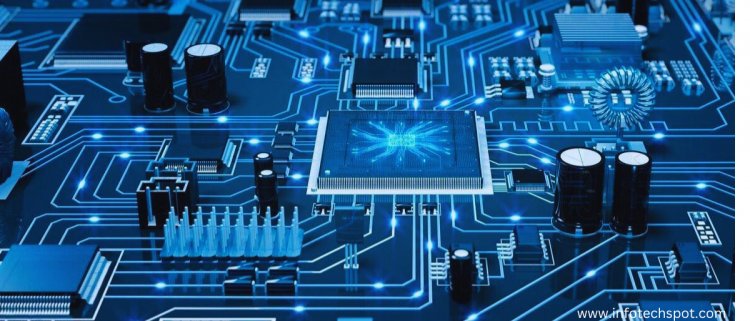Empowering the Future of Energy Conversion
We will delve into the fascinating world of it, exploring its applications, benefits, and its transformative impact on the future of energy conversion.

Power electronics, an essential field in electrical engineering, plays a pivotal role in the efficient conversion and control of electrical power. From our daily lives to various industrial sectors, it has become an indispensable technology. In this article, we will delve into the fascinating world of it, exploring its applications, benefits, and its transformative impact on the future of energy conversion.
Understanding Power Electronics:
It refers to the study and application of solid-state electronic devices that efficiently control and convert electrical power. This field encompasses the design, analysis, and implementation of devices such as power transistors, diodes, thyristors, and integrated circuits. Power electronics devices enable the conversion of electrical power between different forms, such as AC to DC, DC to AC, DC to DC, and AC to AC, allowing for effective energy management.
Applications:
Power electronics technology finds its applications in a wide range of industries, contributing to enhanced efficiency, control, and reliability. Here are some key areas where it plays a vital role:
- Renewable Energy: It enables the integration of renewable energy sources, such as solar and wind, into the power grid by efficiently converting the variable DC power generated by these sources into stable AC power.
- Electric Vehicles (EVs): Power electronics systems are crucial for the operation of electric vehicles, including the management of battery charging, motor control, and regenerative braking.
- Industrial Systems: It is utilized in various industrial applications, including motor drives, uninterruptible power supplies (UPS), adjustable-speed drives, and power quality improvement.
- Consumer Electronics: It is present in everyday devices, ranging from smartphones and laptops to household appliances, ensuring efficient power conversion and longer battery life.
- Aerospace and Defense: It plays a crucial role in the aerospace and defense sectors, providing power conditioning, control, and distribution in aircraft, satellites, and military systems.
Advantages :
Power electronics technology offers several advantages that make it indispensable in modern power systems:
- Energy Efficiency: Power electronics devices enable efficient power conversion, reducing energy losses and improving overall system efficiency. This leads to reduced energy consumption and a more sustainable energy future.
- Improved Power Quality: It helps regulate voltage and current levels, ensuring a stable and reliable power supply, minimizing power fluctuations, and improving the quality of electricity.
- Enhanced Control and Flexibility: It enables precise control and fast response in power systems, allowing for advanced functionalities such as grid synchronization, power factor correction, and reactive power compensation.
- Compact and Lightweight Designs: Power electronics devices have a high power density, meaning they can deliver significant power output in a compact form factor. This property is particularly advantageous in applications with space constraints, such as electric vehicles and portable electronics.
Future Trends and Challenges:
As technology continues to evolve, it is poised for significant advancements. Here are some emerging trends and challenges in the field:
- Wide Bandgap (WBG) Semiconductors: Wide bandgap materials like silicon carbide (SiC) and gallium nitride (GaN) offer higher efficiency, higher operating temperatures, and faster switching speeds compared to traditional silicon-based devices. WBG devices are increasingly being adopted in it for improved performance.
- Smart Grid Integration: It will play a crucial role in the development of smart grids, facilitating bidirectional power flow, energy storage integration, and demand response capabilities.
- Electrification of Transportation: With the rapid growth of electric vehicles, It will continue to advance to meet the demands of high-power density, fast charging, and efficient energy management.
Conclusion:
It is an ever-evolving field that empowers the efficient conversion and control of electrical power. Its applications span various sectors, including renewable energy, transportation, industry, and consumer electronics. With its numerous advantages, power electronics technology contributes to energy efficiency, improved power quality, and enhanced control. As the world strives for a sustainable and electrified future, it will remain at the forefront of technological advancements, enabling the seamless integration of renewable energy sources and driving innovation in various industries.
In summary, it is a vital discipline that underpins the transformation of energy conversion systems. Its continuous development and adoption are key to shaping a greener, more connected, and more efficient world.













